View current page
...more recent posts
Juan Cole on Iran war propaganda:
Polling shows that the percentage of Americans who view Iran as the number one threat to the United States has risen to 27 percent now. I think it was only 20 percent in December 2006. First of all, how in the world can a developing country with about a fourth of the population of the US, about a $2000 per capita income (in real terms, not local purchasing power), with no intercontinental ballistic missiles, with no weapons of mass destruction (and no proof positive it is trying to get them), with a small army and a small military budget-- how is such a country a "threat" to the United States of America? Iranian leaders don't like the US, and they talk dirty about the US, and they do attempt to thwart US interests. The same is true of Venezuela under Chavez. But Tehran is a minor player on the world stage, and trying to build it up to replace the Soviet Union is just the worst sort of fear-mongering, and it is being done on behalf of the US military industrial complex, which wants to do to Iran what it did to Iraq. It is propaganda, and significant numbers of Americans (a 7 percent increase would be like 21 million people!) are buying it.Many higher ups in media and the government don't know the difference between Sunni Muslims (comprising most of the Iraq insurgents) and Shiite Muslims (comprising the majority of Iraqis and almost all Iranians). Or that Iranians are Persian, not Arab. How can millions of Americans understand that if it isn't explained to them?
Why have those poll numbers gone up? Because the Bush administration is trying to hang the Sunni Arab insurgency in Iraq on Iran (and even trying to hang the Taliban resurgence in Afghanistan on Iran). The message of administration and military spokesmen is that Iran is deliberately killing US troops and is a major source of insurgency in Iraq. No convincing evidence has ever been presented for either allegation, nor is it reasonable to assume that Iran plays a significant role in funding hyper-Sunni, Shiite-killing death squads to deliberately destabilize its client governments in Baghdad (al-Maliki) and Kabul (Karzai). Yet the New York Times and even the Guardian put this b.s. on the front page, and of course it is all over CNN, Fox Cable News, MSNBC, etc. Are US journalists trapped in the the dictates of the military-industrial complex by virtue of working for these mega corporations? We know that Roger Ailes at Fox Cable News orders his employees how to spin the day's news (he is a former high Republican Party official). Has any of the journalists counted up how many of the 127 US troops killed in Iraq in May was killed in Sunni Arab areas and how many in Shiite neighborhoods? Has any of them actually read the translated communiques on World News Connection of the Sunni Arab guerrillas and what they say about Iran and Shiites? Has any demanded air tight proof and non-anonymous sources before printing this garbage?
No.
Rest in Peace, Steve Gilliard.

The best, most honest, least compromising political blogger, Steve Gilliard, has died. He had a devastating sense of humor and no careerist agenda beyond excellent writing and saying exactly what he thought. Meaning that, unlike DailyKos or MyDD, he didn't use his blog for political activity and he didn't hang with politicians. He also wasn't looking to "move up" to the mainstream media--in fact, he often boasted that his readership was as large as many lefty print mags, so why did he need to join them? And he didn't just vent, he did his homework--for example, a memorable, well-researched series on the history of colonial warfare, from a strategic viewpoint. Reading those case studies helped you to recognize the Iraq War for what it is and also, strangely optimistically, to know that it is a 19th Century relic and therefore doomed (if optimism is the right word for an experiment with such a great human cost). Gilliard remains an inspiration and an ethical yardstick for all attempting to step out of established modes of communication. He will be celebrated long after the Tim Russerts and Peter Beinarts are forgotten jokes of history.
(photo by Lindsay Beyerstein)
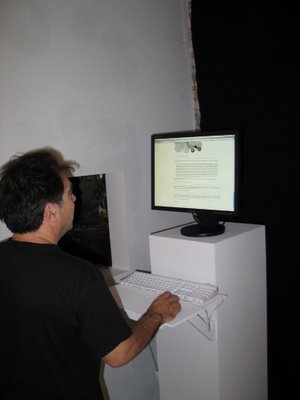
Was hoping to get this photo posted before the gallery closed today but have been on the road. Missed it by 14 minutes. Next week for sure for one ultimate self referential feedback loop post for BLOG, the exhibition. Photo of seminal conceptual artist from Aron Namenwirth's blog.

















































GIF grid by eyekhan
not ideal in RSS readers
Am currently in Charlottesville, VA, attending an anniversary event for the college radio station WTJU, where I DJ'd for several years and enjoyed a couple of bracing years of administrative responsibility (as program director). 'TJU is much like WFMU in NY*, a free form format with knowledgeable volunteers as jocks. When I was in school it was entirely student run and thus a creatively fertile chaos, but it has since hired a station manager who miraculously is not a micromanager and lets the volunteers continue to shape the content. Charlottesville is beautiful but barely recognizable from my student days for all the growth. It has been touted as a perfect city so of course everyone wants to move there.
*metropolitan area
Reporting from Washington DC. Checked out the newest addition to the Smithsonian's museums on the Mall: the National Museum of the American Indian. Dramatic yellow adobe modernist building with the obligatory giant atrium, nice for the architect's portfolio but hogging much of what could have been exhibit space. Some wonderful collections of objects such as a show of women's apparel with intricate beadwork and concentric rings of elks' teeth (only two of such teeth per elk, so the more rings the mightier the woman's husband's hunting prowess, according to the video). Unfortunately most floors gave prominence to exhibition design over artwork, presenting crowded mazes of computer-generated text-and-photo spreads and interactive video terminals. Actual artifacts, darkly lit against darker backgrounds, tended to be swallowed up in these seas of typography. Other problems: vague and blandly worded themes ("our people," "our universes"), no clear timelines or sense of geography, avoidance of any kind of overall narrative history. Haven't researched the politics of how the museum came together and what kinds of compromises had to be made (either among tribal interests or to sidestep the U.S.'s sordid past of mass native American disenfranchisement), but the murkiness of the design seemed purposeful. Not to overlook the simple problem of "too many cooks" in the layout or the ever-ascendant tendency of designers to think they're artists and overwhelm the actual artwork on display.
Belatedly posted photos here.
Documentation of my work in the "Fresh NY" show at Threshold Art Space, Perth, Scotland. Eleven of the 22 screens are shown. Photos by exhibition curator Anne Barlow. The OptiDisc GIF below is reduced; clicking on image shows the actual size (of the GIF--the screens are much larger).
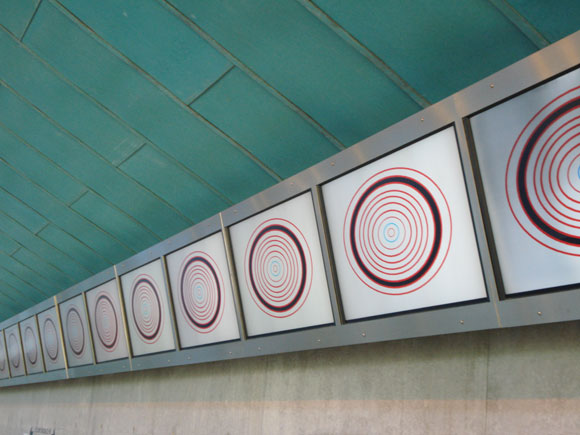
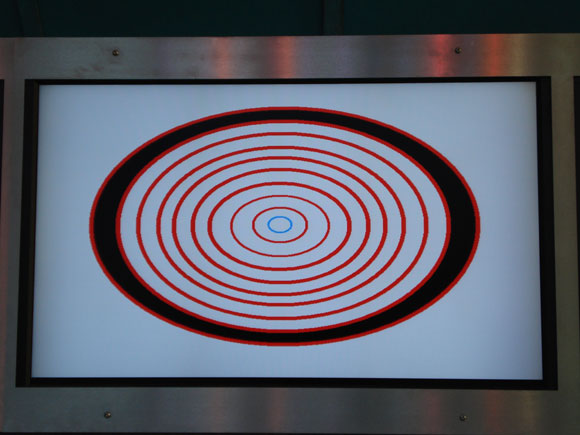
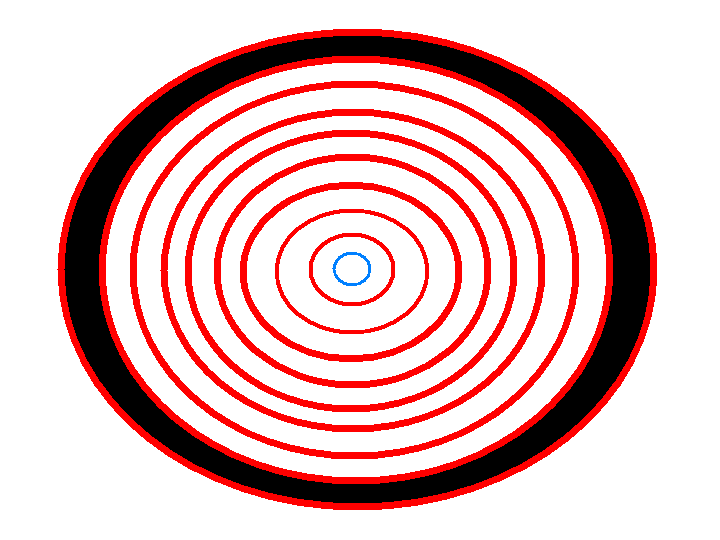
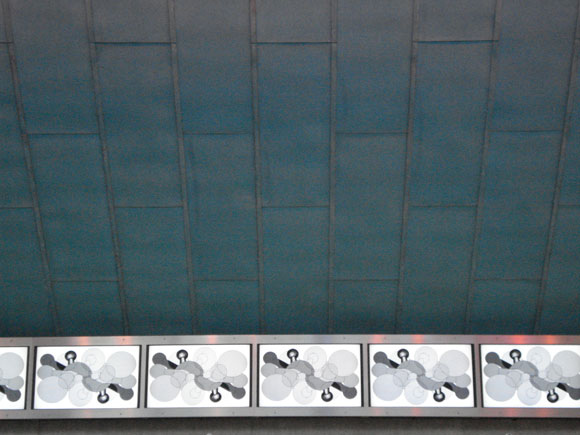
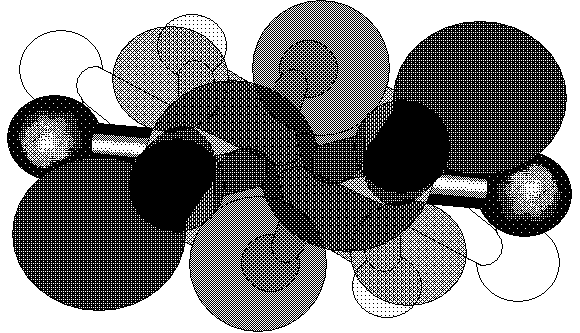
return to main site
